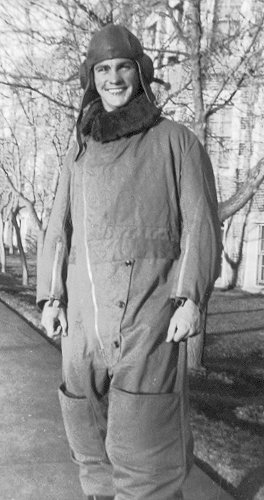
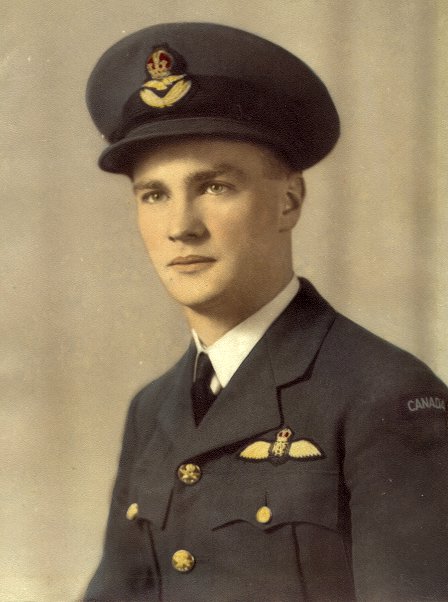
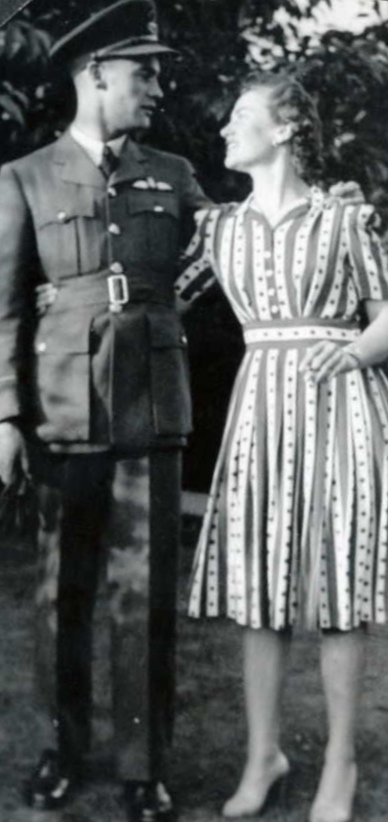

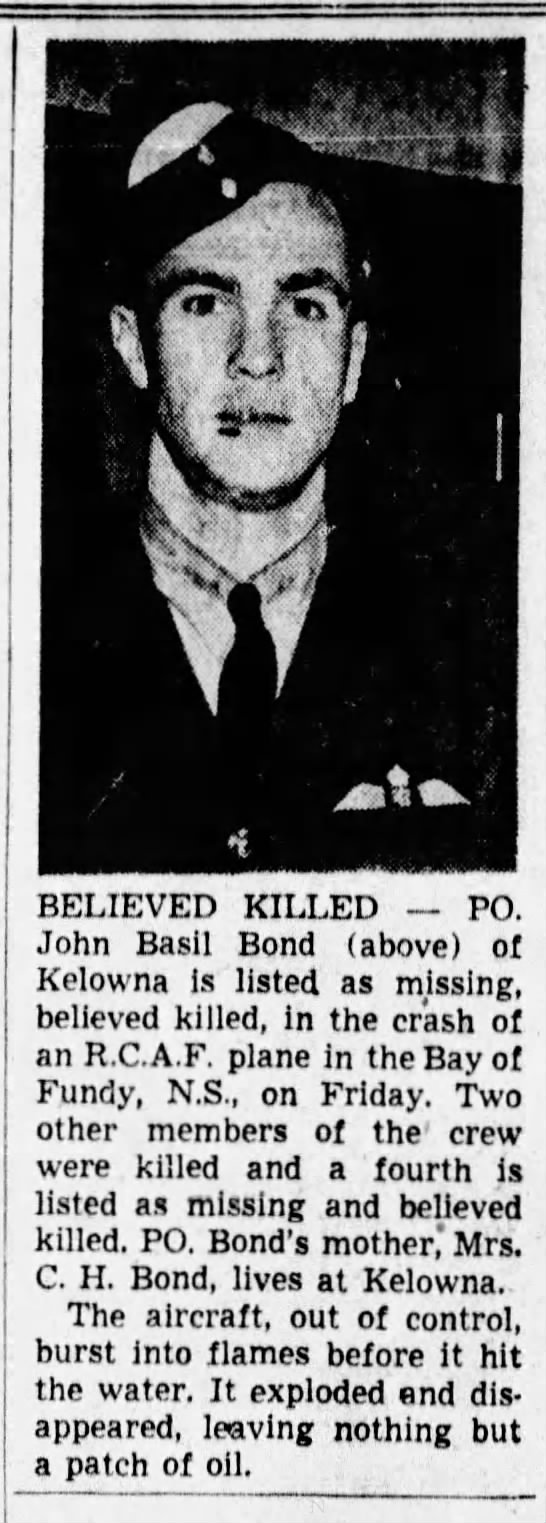

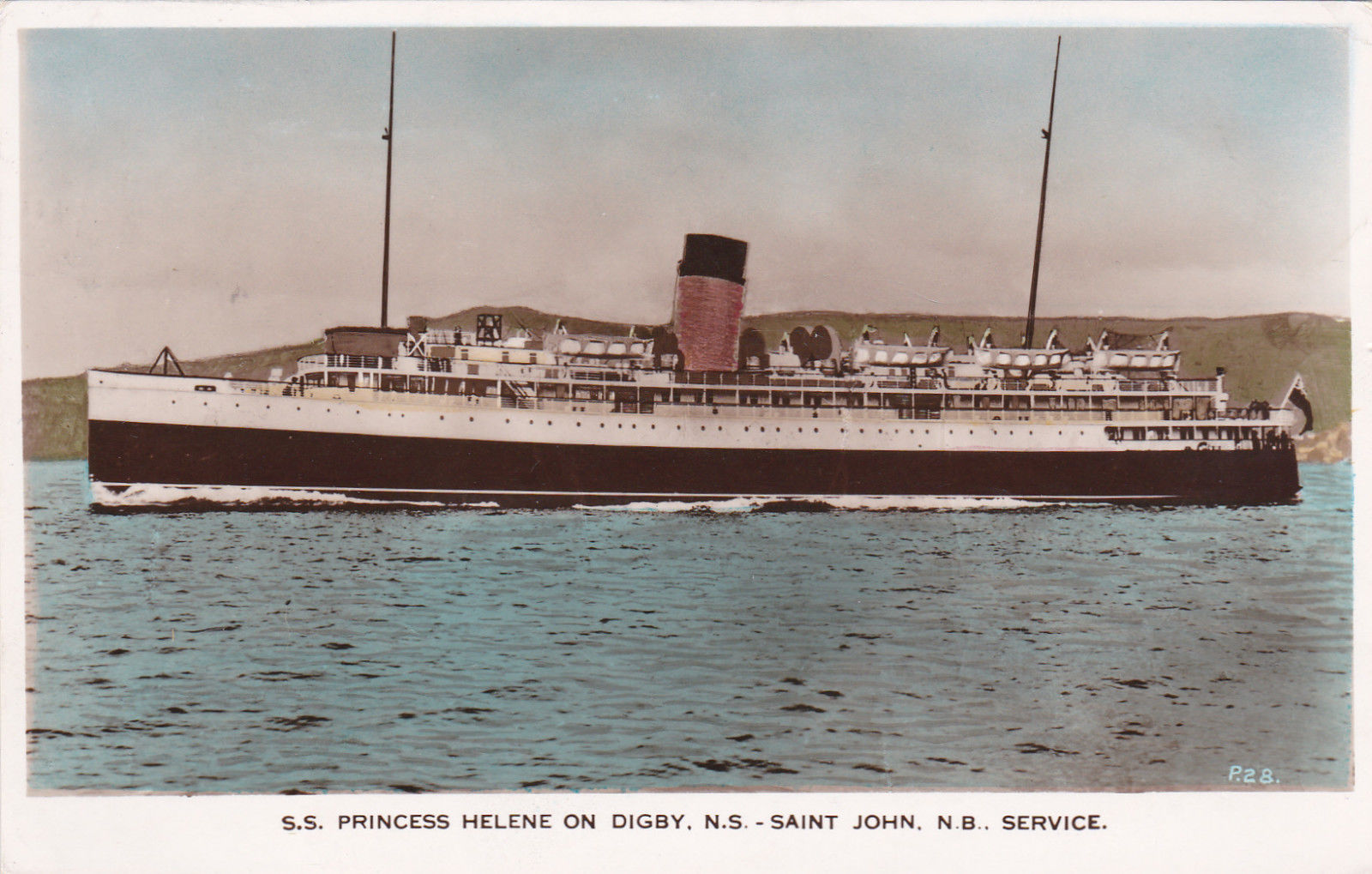
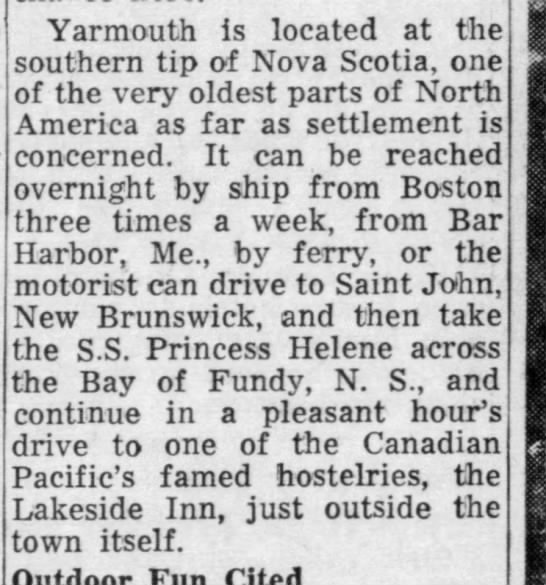


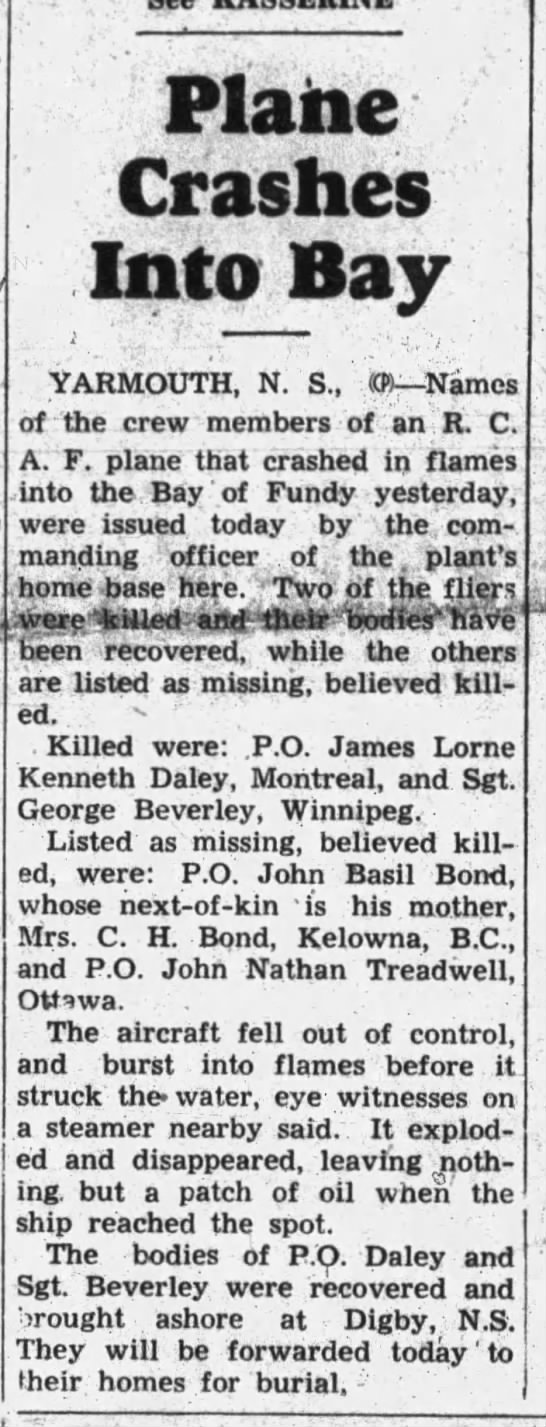
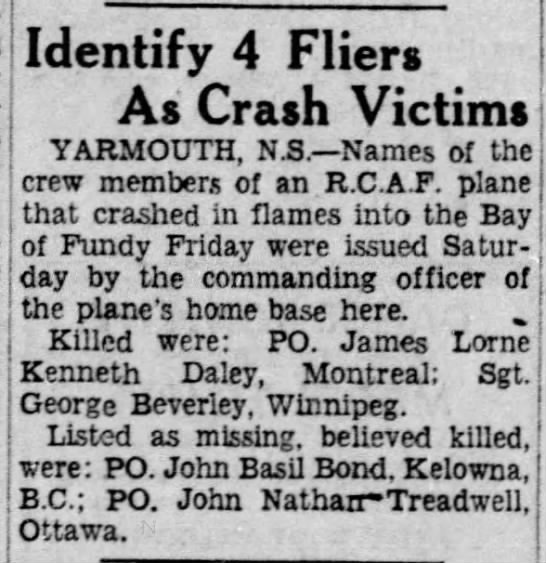
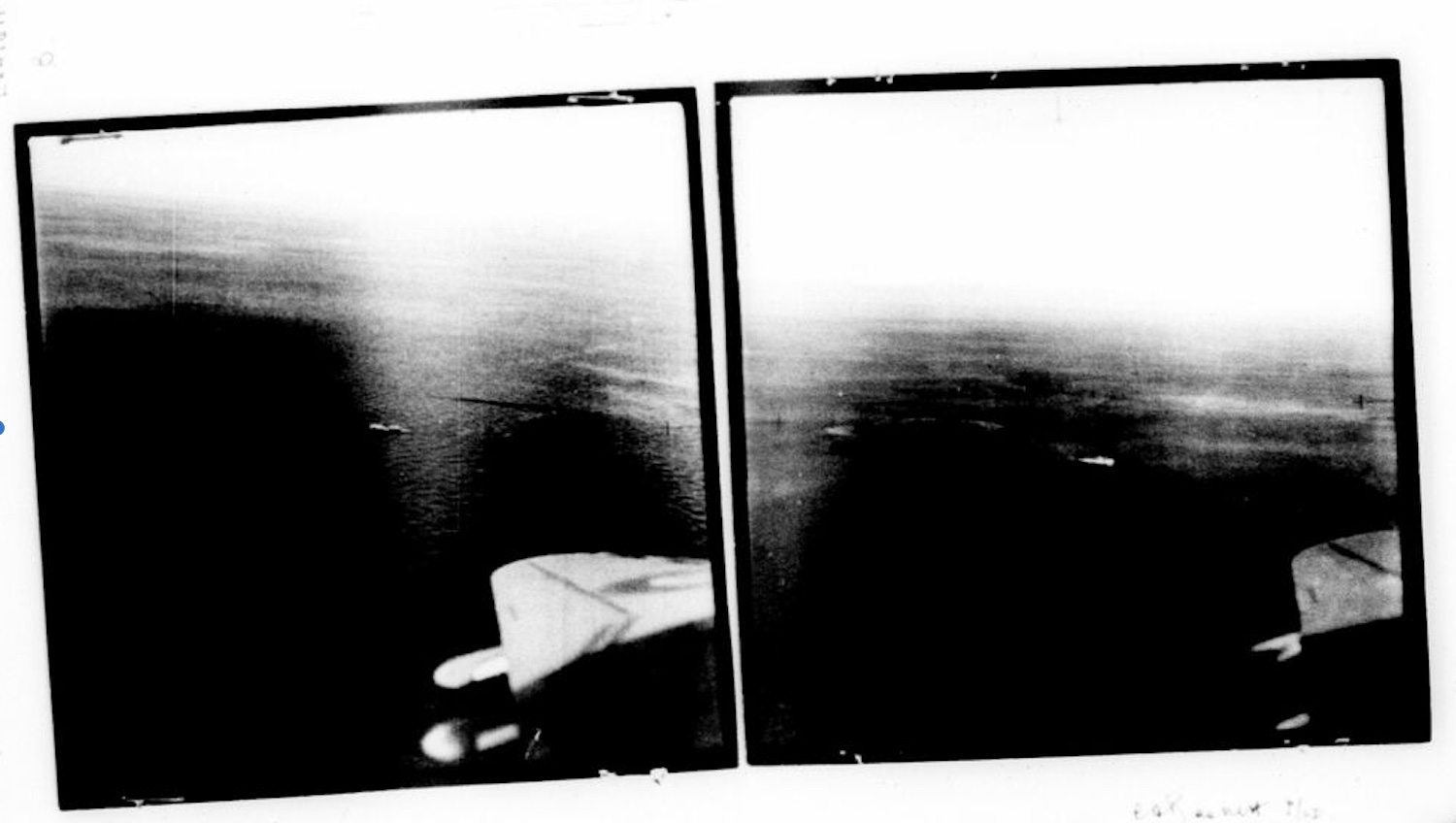
April 14, 1921 - February 26, 1943













John Basil Bond, known as Jimmy to his family, was the son of Edith Margaret (nee Thompson) Bond (1886-1969) and Cecil Henry Bond (1877-1955), farmer, Rutland, BC. He had two sisters, Mrs. Peggy Taylor and Aileen Mary Bond. His brother, Ainslie Kenneth Bond (1911-1998), was in the RCMP. The family was Anglican.
John enlisted with the 2nd Btn Rocky Mountain Rangers (NAPM) prior to joining up with the RCAF. While in Nanaimo, He was in the COTC. He stood 5’10”, weighing 155 pounds, had blue eyes, brown hair and a medium complexion. A scar dorsal surface left index finger was noted as was a 2” scar on the back of his calf. He had been a lifeguard in the summers from 1939-1940 and then worked with the Kelowna Growers Exchange making boxes before he returned to school. He had senior matriculation and had attended normal school in 1940-41.
In beautiful handwriting, John added, “Have had army training in Kelowna for two months with two weeks of camp’ also 110 hours of ‘initial training’ at Normal. Have completed exams for a Strathcona Trust Certificate (PT). Was one of four BC boys chosen to try for medal.”
By July 3, 1941, he joined the RCAF. He liked many sports: badminton, swimming, football, softball, running and jumping, volleyball, basketball, and occasionally lacrosse and hockey; he noted hunting as a hobby. After the war, he thought he wanted to return to teaching and/or be involved in commercial aviation. Good pilot material. Very fit. Fit for combatant, passenger, and ground duties. Fit for full flying and ground duties.” His teeth needed attention in October 1941.
He had $22.77 in his bank account at the Bank of Montreal, Kelowna and $150 in Victory Loan Bonds, plus had a life insurance policy, paying a $5/month premium, his mother the beneficiary.
John started his journey through the BCATP at No. 2 Manning Depot, Brandon, Manitoba on July 4, 1941. He was sent to No. 15 SFTS Claresholm for guard duty until he was taken at No. 4 ITS, Edmonton, Alberta on September 26, 1941. He was in the station hospital August 23 to September 1, 1941. “Very alert. Leader type. Above average. Active in most sports.” He was 2nd out of his class of 125.
He was then sent to No. 5 EFTS, High River, Alberta where Jock Palmer was the CFI. “No outstanding faults. Above average, well-spoken, courteous, fine type, conduct excellent. Average link 80%.” He was 5th in his class.
From there, he was sent to No. 7 SFTS Macleod where he earned his wings in June 1942. “An above average pilot, sound and thorough in all his flying.” In ground training: “Energetic and aggressive; intelligent, shows leadership.” Jimmy received a special distinction -- “an outstanding student in all respects.” He was first in his class.
John was in the station hospital from January 18 to February 3, 1942, then again April 20 to April 24, 1942.
He was then sent to No. 31 GRS, Charlottetown, where he received his commission. “Above average. An excellent pupil; alert and intelligent. This officer has worked hard and shown outstanding keenness. He has proved himself to be a reliable and capable navigator and should be an asset to any GR Squadron. Recommended for flying boats. Good officer. Should make a steady and reliable GR pilot.” He was first in his class with an average of 87.9%. Other comments: “Very reliable, has initiative and works hard.”
He was then sent to No. 31 O.T.U., Debert, NS, September 20, 1942. “Has attained a very satisfactory standard on his ground work. Very keen. A confident and intelligent pilot with above average ability. Will do well as an operational pilot. Above average in manner and bearing. Will make a useful officer in a squadron.” December 1942.
Then he was sent to No. 113 Squadron, Yarmouth, NS January 29, 1943. He was in the station hospital from February 21 to 25, 1943.
“Aircraft crashed into the Bay of Fundy while on A/S patrol. Cause of crash unknown.” Operational flight in Bay of Fundy, Near Digby, Nova Scotia. From the men’s files, the pilot and navigator, and one WOAG indicated they did not smoke when they enlisted in the RCAF. James Daly, the WOAG, smoked the occasional pipe. During the course of the Court of Inquiry, one witness said that he knew that all the crew were smokers. Another witness found evidence of smoking in the airplanes, finding the occasional cigarette butts. Hudson Mk III (BW634) - 26 Feb 43. This aircraft suffered an in-flight fire, may have exploded, and crashed into the Bay of Fundy about 17 miles north-west of Digby, Nova Scotia while escorting the S.S. Princess Helene. The mission was flown by 113 (Bomber Reconnaissance) Squadron from Yarmouth. Sgt Beverly is buried at his home in Winnipeg, P/O Daly is interred at Montreal.. “Aircraft crashed into sea. Aircraft was seen to catch fire in the air and explosion took place. Two bodies were picked up by crash boat, both having been killed in explosion of aircraft or by crash.” Recommendation: “Practice of smoking in this type of aircraft be prohibited due to possibility of petrol fumes congregating in cockpit from leaky fuel system.”
Please contact me for the Court of Inquiry, if interested.
LINKS: